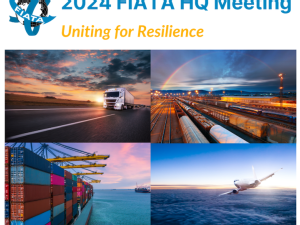Trump Travel Ban Said to Start Thursday Evening U.S. Time
By: | Jun 29 2017 at 04:18 AM | Air Cargo
The Trump administration will introduce new restrictions on travel to the U.S. by refugees and migrants from six countries as of 8 p.m. eastern time Thursday, according to a person familiar with the matter.
The rollout of the measures, which follows a U.S. Supreme Court decision Monday allowing parts of an executive order to proceed, is being led by the State Department. The timing is aimed at giving embassies and consulates sufficient direction on how to implement the protocol before it comes into effect, according to the person, who asked not to be identified because the move hasn’t been formally announced.
The policy is an attempt to flesh out a June 26 Supreme Court decision reviving President Donald Trump’s 90-day travel ban on people entering the U.S. from six predominantly Muslim nations: Iran, Libya, Somalia, Sudan, Syria and Yemen. Existing visas will be respected, but new applicants from the countries must prove a relationship with a parent, spouse, child, sibling or close in-law already in the U.S., the Associated Press reported, citing a diplomatic cable.
Travelers with business or professional ties from the countries must also show a relationship that is “formal, documented,” and not based on an intent to evade the ban, the AP said. Some exemptions, including for students and journalists, are included in the policy, the news service reported.
After months of delays to Trump’s initial travel ban and a revised version, both held up by the courts, the 13-page Supreme Court ruling allows the government to deny entry to people from the six nations who don’t have existing U.S. ties. But determining who has “bona fide” connections—the court’s phrase—has tied up officials from the Department of Homeland Security, the State Department and the Justice Department since the ruling was issued.
Carriers affected by the new measures said they’ll take the presentation of legitimate paperwork for entering the U.S. as indicating that passengers are compliant with the requirements. Dubai-based Emirates, which ranks as the world’s biggest long-haul airline and has flights from Iran and Sudan among the affected countries, said that its U.S. services are operating as usual.
“All passengers must possess the appropriate travel documents, including a valid U.S. entry visa, in order to travel,” it said. “Emirates remains guided by the US Customs and Border Protection on this matter.”
Etihad Airways PJSC, whose Abu Dhabi base is also a hub for the region, is operating as normal and will allow people with the correct documents to fly.
The ban drew public protests and criticism from advocacy groups, former officials who work on refugee issues, and nongovernmental organizations that relocate them to the U.S. They contend that the majority of refugees coming to the U.S. already have family ties and that the existing process of clearing them to live in the U.S. is extremely rigorous.
‘Not Needed’
“The pause is not needed because the vetting process is so thorough already,” said Anne Richard, a former assistant secretary of state for population, refugees and migration. “The political campaign rhetoric that there was no vetting process or a weak vetting process is complete nonsense.”
The Trump administration has countered that refugees may pose a security risk. Cabinet members such as Secretary of State Rex Tillerson, meanwhile, have said the U.S. wants to keep refugees that have fled to places such as Jordan and Turkey within their regions so they can return home when it’s safe to do so. They are also asking other countries to take more of the burden.
“Our message is we’re leaning in and asking all of you, all of you to step up and do more,” Tillerson testified at a Senate hearing earlier this month.
Implementing the ban requires providing clear guidance for thousands of customs and consular officials, as well as airlines and other travel companies around the world seeking to avoid the confusion and chaos generated by Trump’s initial attempt to enforce his policy in January.
“There will be some amount of iterative process,” said Brian Egan, a legal adviser in President Barack Obama’s State Department. “The guidance is going to take a little while to generate, even if the policy were crystal clear. You’ve got to draft it and get it through the lawyers at State, you’ve got to make sure the White House is comfortable with it, and the Department of Justice and DHS, too.”











